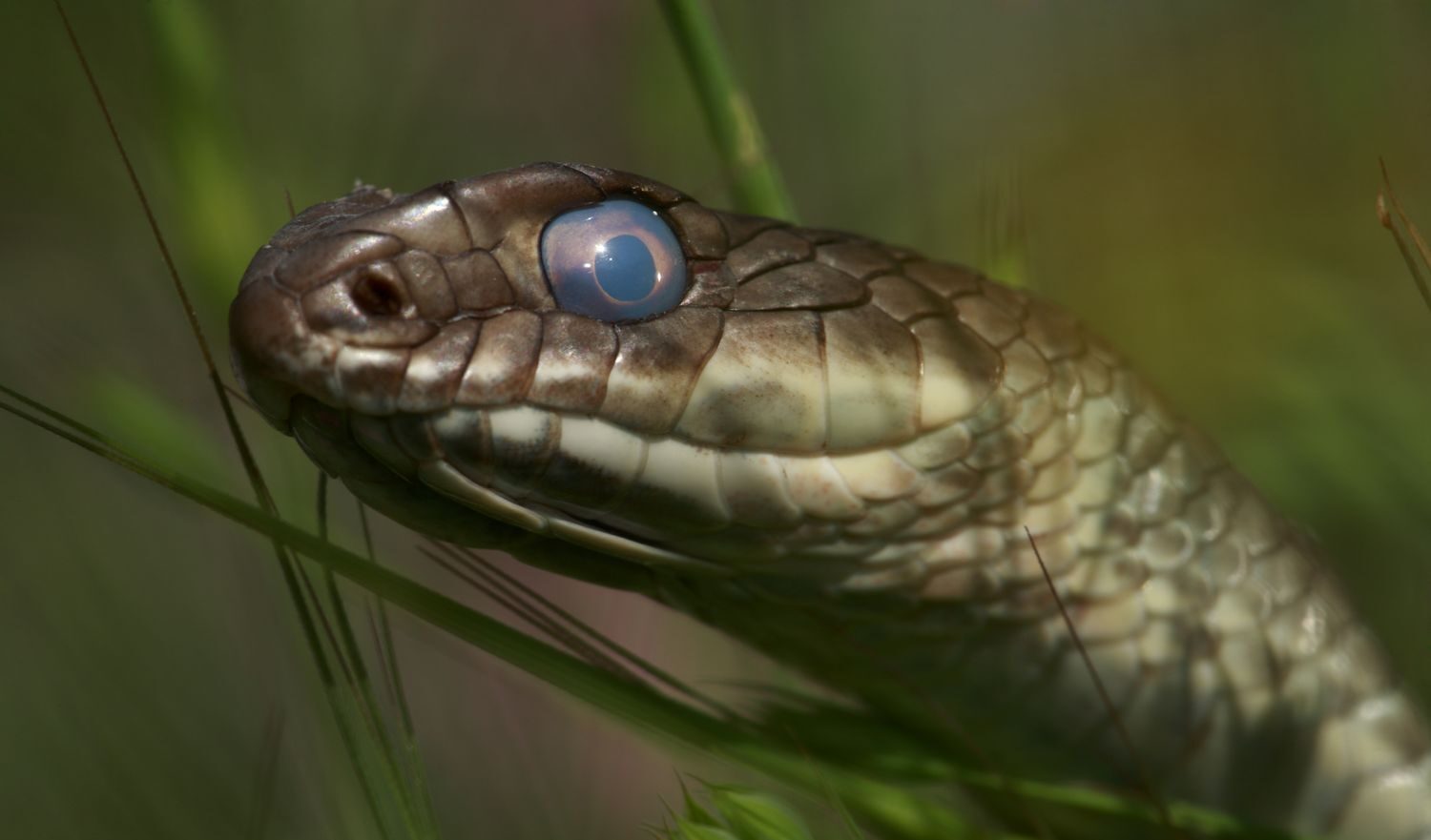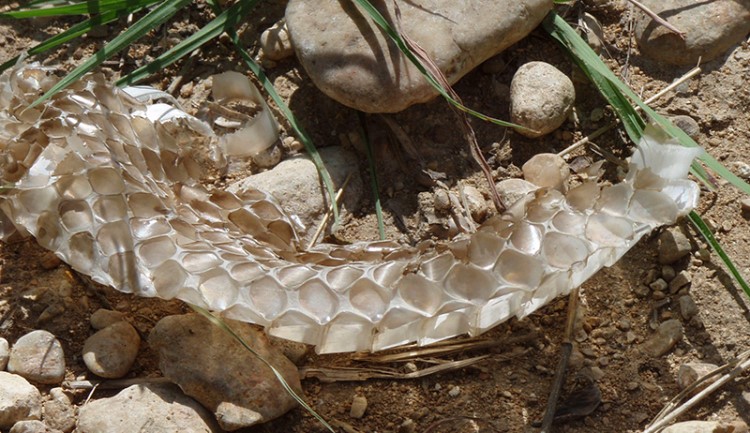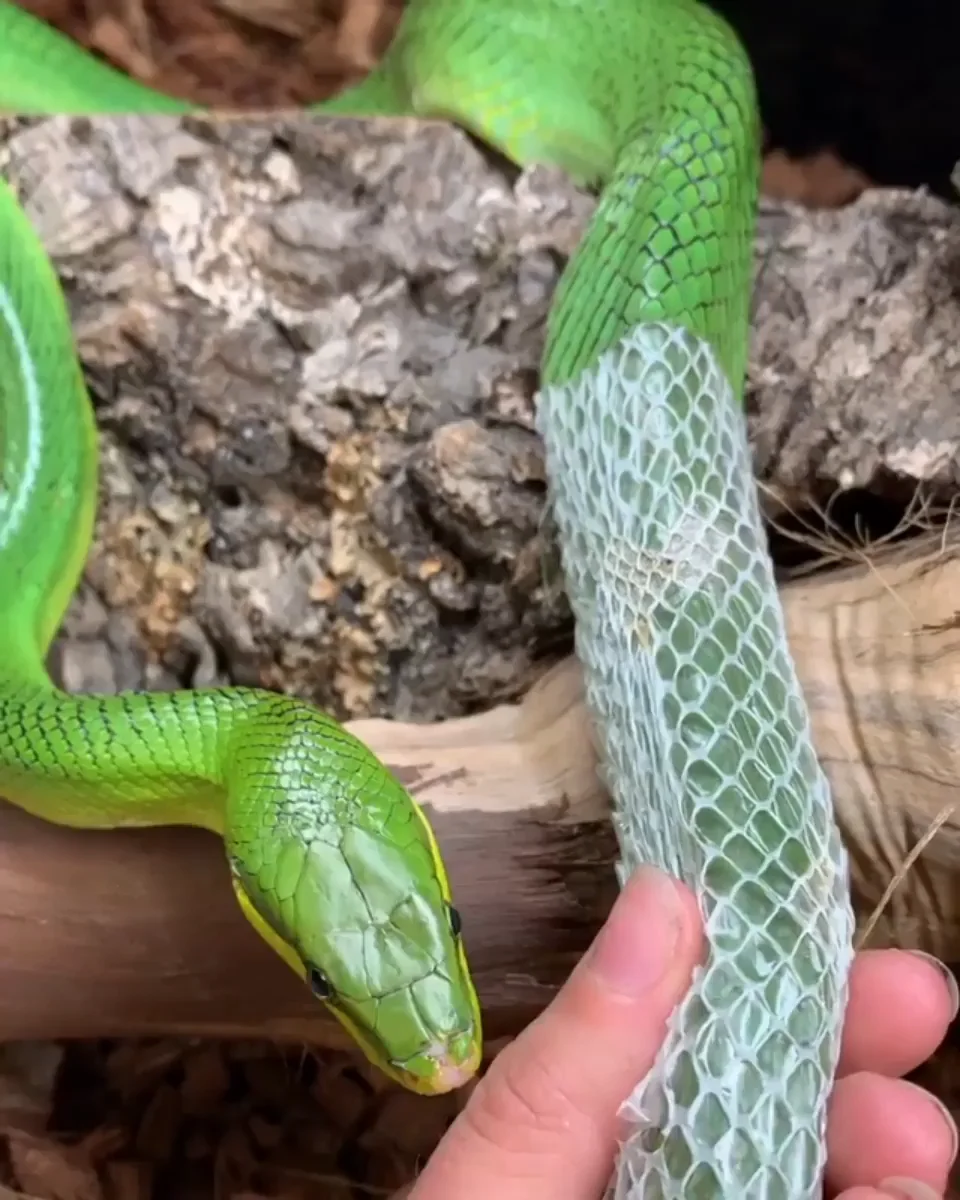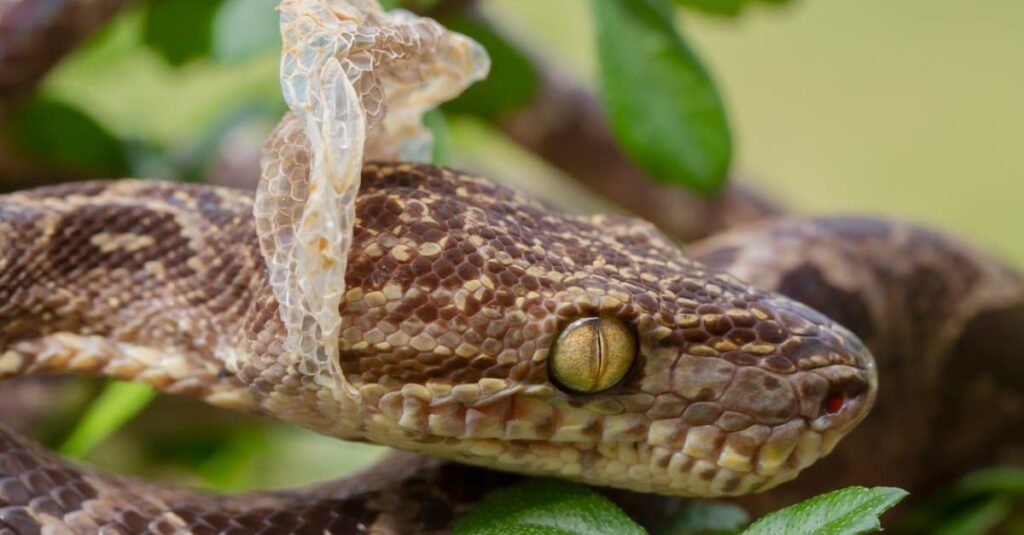Have you ever wondered Why do Snakes shed their skin? Some kinds of animals continue their entire lives “wearing the same clothes,” whereas other species frequently go through molts to “refresh” themselves. And one of them is a snake. In the course of the season, they have the propensity to shed their skin, but why, you ask?
Let’s explore with yeusnaker right in this article!
What do You Know about Snake Skin?
Snake skin is not slippery or moist, unlike what many people think. It is comprised of a network of overlapping scales that is dry, smooth, and facilitates movement. Snake skin aids in movement, functions as camouflage, keeps the snake’s body protected, and helps it retain moisture. Additionally, it is a powerful strategy for luring prey.
The two primary layers of a snake’s skin are its soft, colorful dermis and its hard, slightly translucent scales. These scales are made of the same horny material that makes up hair, nails, and horns. They also contain trace levels of melanin, a dark-brown or black pigment that shields the bottom layers of skin from the sun’s harsh rays. The number of scales is constant from birth to the end of the snake’s life, but as it gets older, the scales themselves get bigger to fit the expanding body.
A snake’s skin can vary widely in terms of hues and patterns depending on the breed. People can recognize snakes thanks to this significant characteristic as well. While the length of their limbless, lengthy bodies varies, they all have one thing in common: they go through a year-long cycle of skin shedding.

When do Snakes Shed their Skin?
In reptiles, the skin is different. Reptiles periodically shed their skin rather than continuously. Because their skin frequently flails off in parts, snakes are much more distinctive. Although it typically happens approximately two to four times each year at most, snakes can molt as frequently as once every month. The average varies with species and age, though. Young snakes in active development might shed their skin every two weeks. The skin of older snakes may only shed twice a year. The snake will typically stop eating at the start of this crucial procedure and look for a place to hide.
Why do Snakes Shed their Skin?
Scientists refer to the process of shedding as Ecdysis, and a variety of factors can influence how and when snakes shed their skin. Species, age, climate, nutritional status, and the presence of germs or parasites are a few of these.
Simply explained, snakes shed their skin when it is damaged, worn, or no longer acceptable. A snake’s skin stretches as it grows. Snake skin does not get longer as an animal matures, unlike human skin. When the snake’s skin eventually runs out of room to develop, it will lose its outer layer.
Although shedding is a necessary stage of a snake’s growth, it also has another function. It aids in eliminating parasites that could endanger snakes. Because they are still growing, young snakes frequently shed more hair than adult snakes do. Additionally, snakes frequently shed their skin just before or right after giving birth.

Manifestations of Snakes when Shedding Skin
After the snake develops a fresh layer of skin just below the previous horny layer, the molting procedure starts. A snake’s appearance starts to turn blue before it loses its skin, and the newly developed skin covers its eyes, giving them a foggy or overcast appearance. They occasionally locate a secure location to hide until they begin to molt because they are unable to see well during this time.
Snakes scratch against a rock, tree, or other similarly hard surface to start the process of shedding their old skin. They will make a tear in the old skin when they are ready to shed it, typically around the mouth or nose. So they can then wriggle into rocks, plants, and other similar surfaces to slide out of the old skin. Some snakes are capable of skin shedding in water.
A new skin layer will develop under the old one once a snake sheds its skin. When it’s finished, the old skin peels off, leaving a shell that resembles a snake and any parasites that might have attached themselves. After finishing this procedure, most snake species leave behind a white or brown shell. For instance, the Australian water python‘s skin can take on a rainbow appearance when light is directed at it at a specific angle.
The snake is somewhat susceptible during the duration of the molt, which can take several days or weeks. It must therefore locate an appropriate hiding location. Scales and the location of the snake’s eyes are occasionally depicted in great detail on snake skins. Sometimes banding patterns and other obvious characteristics might even help you recognize a snake just by looking at its skin.

What can you do with your pet snake while shedding its skin?
For the health of any snake, Ecdysis is crucial. There are a few things you can do to guarantee a successful peel, even though an incomplete peel is one of the most frequent issues. In order to release the skin, you need always offer a firm surface for it to brush against, such as a rock or a piece of driftwood. Some dead skin that won’t come off can occasionally be removed by giving the snake a little water to soak in.
Additionally, you must supply a sturdy container with the appropriate humidity and temperature (often, between 50 and 70% is sufficient). If it matters, you might need to slightly raise the humidity, but otherwise, the climate is fine. During this time, you should also be aware of the temperament of your pet snake. It can be rather impact-sensitive and frequently feels stressed. Additionally, it may be a little more hostile and defensive than usual.
A parasite, infection, nutrient deficit, or other health issue could be the cause of your snake’s improper skin shedding. Ask your veterinarian what’s wrong to learn more.
Bottom line
A snake must go through molting (shedding its skin) on average 4 to 8 times every year, whether it be a little snake or a huge cobra with lethal venom. So why do snakes shed their skin? Snakes molt to replace their old skin, which has deteriorated and is no longer tightly enough to cover their growing bodies. On dry skin, this is also how parasites are removed. And more than that, information about the snake skinning process has been provided above. We hope this article was helpful to you!
Learn more: Identify Venomous Snakes and How to Avoid Venomous Snakes

